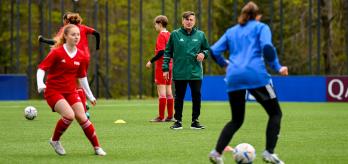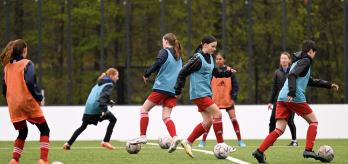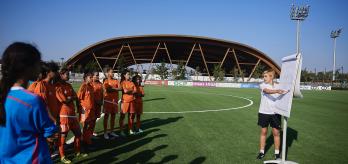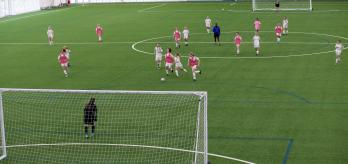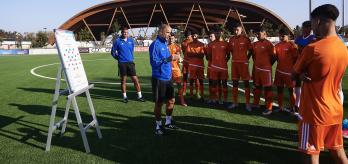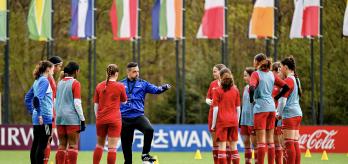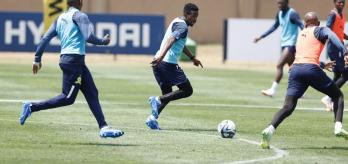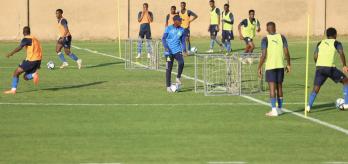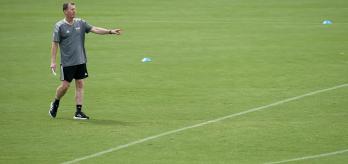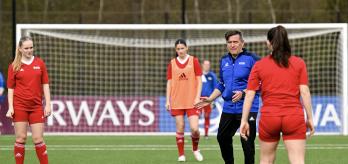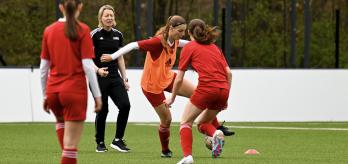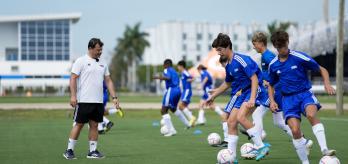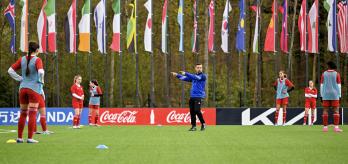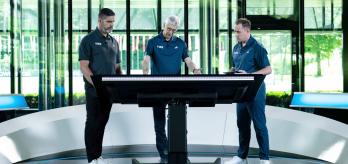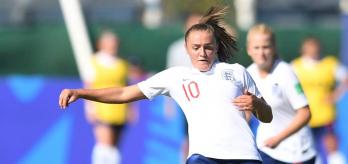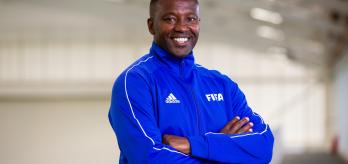As a first step, stretching the pitch offers the attacking team a strong platform on which to successfully switch the play. If a team’s system involves wingers, they may look to play longer diagonal passes, whereas a side that operates with wing-backs may prefer to play through the central areas, at least initially. Players should consider whether or not the switch is on and may instead look to retain possession or offer more than one option to move the ball from one side of the pitch to the other.
In this session, Fulham FC's Head of Academy Coaching, Ben Bartlett, delivers a number of exercises that focus on switching play in different systems and involve participants alternating between a large pitch and a small pitch. Bartlett applies an implicit learning approach in which rule changes and incentives play an important role as he subtly guides players on a step-by-step journey to offer them an understanding of the key points of switching play.
Session design
Throughout this session, the exercises alternate from a large pitch (9v8) to a small pitch (2x 5v5), with the same principles applying in both instances.
The session is derived from a real-game scenario and the formations on the large pitch need to offer a realistic representation of the systems a team adopts in 11v11 matches (4-3-3 and 3-5-2). The large pitch allows players to apply certain principles when switching play, such as using anchor points and a range of passes, whereas the purpose of the small-pitch drill is to give players the opportunity to use the same principles of switching play they have practiced before on the large pitch but in tighter spaces, where their individual technical ability plays a more prominent role.
As the players progress through the drills, it is important that new tactical concepts be introduced in each exercise. The first step involves equipping the players with the knowledge to know how and why to switch play, before working on controlling possession and the game and then finally developing the skills to apply an effective counter-press. Allow some time after each game to reflect on the aspects that were successful and areas for improvement.
Key coaching points
-
Use two different systems that feature various player roles so as to offer players an understanding about how and when to switch play, based on the system in which they are operating.
-
Quick switches of play can allow a team to exploit a defence’s weak area, or in other words, the part of the defence with the fewest defenders.
-
Encourage players to switch play quickly using a range of passes, such as long diagonal passes or short incisive passes into central players, who act as an anchor point.
-
Before switching play to the other side, think about how the team can stretch the pitch and create the space to make the switch.
-
Vary the approach taken to switching play and, based on the situation, make a decision about whether it is better to initially build up possession or look to switch the ball quickly.
















